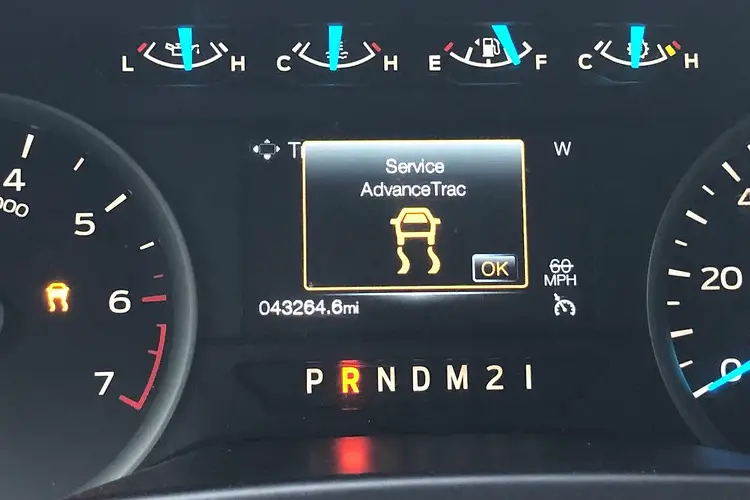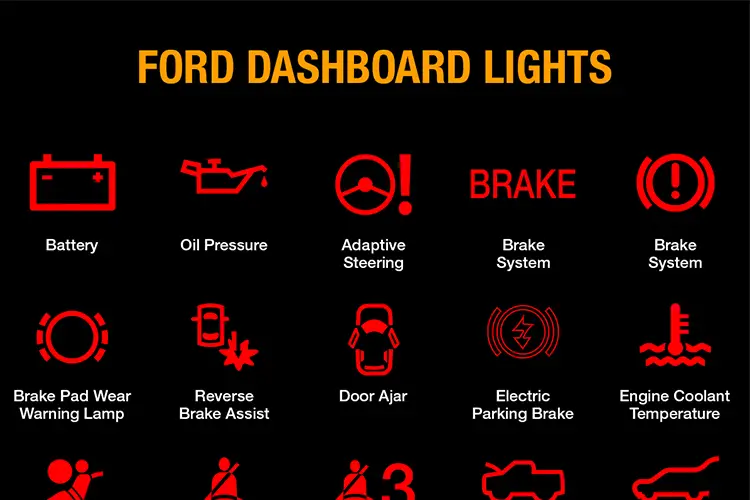Have you ever seen the “Service AdvanceTrac” message pop up on your Ford and wondered what it means?
You’re in the right place because I’m about to break it down for you.
In this article, I’ll tell you what that message means, why it’s there, and what you can do to get your Ford back in tip-top shape.
So, buckle up, and let’s dive in!
What Does Service AdvanceTrac Mean?

The “Service AdvanceTrac” message on a Ford vehicle typically indicates a problem or malfunction with the vehicle’s Advancetrac system.
Ford’s AdvanceTrac is an electronic stability control (ESC) system designed to help drivers maintain control of their vehicles in various driving conditions, such as slippery roads, sudden maneuvers, and emergencies.
When the Advancetrac system detects a potential loss of control, it automatically applies the brakes to specific wheels and adjusts engine torque to help the driver regain stability.
This technology combines several components, including antilock braking (ABS), traction control, and yaw control, to provide a comprehensive stability enhancement system.
This system can be found in various Ford models like the Focus, Fusion, Escape, Explorer, Edge, F-150, Mustang, and Taurus.
Is It Safe to Drive with Service AdvanceTrac?
No. It is not safe to drive with a malfunctioning or disabled service AdvanceTrac system. Driving without this system could compromise your safety and increase the risk of loss of control or accidents.
It is crucial to diagnose and repair the issue by a qualified technician as soon as possible to ensure your safety and the proper functioning of your vehicle’s stability control systems.
Why Is the Service AdvanceTrac on?
Now that we’ve explored the significance of the “Service AdvanceTrac” message, let’s delve into the potential culprits behind its appearance.
Here’s a closer look at why the Service AdvanceTrac message might illuminate on your dashboard and the recommended solutions for each scenario:
Solution: Replace the faulty wheel speed sensor.
Solution: Check and recalibrate the steering angle sensor if possible. If recalibration doesn’t resolve the issue, replacement of the sensor may be necessary.
If the clock spring is broken, it can lead to a loss of electrical connection between the steering wheel and the vehicle’s electronics. This can affect the operation of the steering angle sensor.
Solution: Replace the damaged clock spring. This is a complex repair, so it is recommended to seek assistance from a qualified technician.
If the wiring is compromised, it can prevent the system from functioning correctly, prompting the warning message.
Solution: Inspect the wiring harness for any damaged or corroded wires. Repair or replace any damaged wiring as needed. Ensure that all connections are secure.
If there is a significant mismatch in wheel sizes or tire tread depths, it can cause variations in wheel speed readings. This discrepancy can confuse the system and trigger the message.
Solution: Ensure all wheels and tires on the vehicle are of the same size and specifications as recommended by Ford. If necessary, replace or adjust the mismatched components.
How to Fix Service AdvanceTrac
Fixing the “Service AdvanceTrac” issue typically requires diagnosing and addressing the specific cause of the problem. Here are general steps to follow:
Step 1: Inspect for Visible Damage
Visually inspect the area around the steering wheel and under the vehicle for any visible damage, loose connections, or obvious issues like damaged wiring or sensors. Sometimes, the problem may be evident upon inspection.
Step 2: Use a Diagnostic Scanner to Read the Trouble Codes
Modern vehicles are equipped with onboard diagnostic systems. You can use an OBD-II scanner to retrieve error codes related to the “Service AdvanceTrac” warning. These codes can provide more specific information about the problem.
Step 3: Address the Specific Issue
Based on the diagnostic codes and visual inspection, you can identify the root cause of the “Service AdvanceTrac” warning. The following steps correspond to common causes:
- Replace the faulty wheel speed sensor.
- Recalibrate the steering angle sensor if possible. Replace the sensor if needed.
- Replace the damaged clock spring.
- Repair or replace any damaged or corroded wiring.
- Correct the mismatched wheels or tires, ensuring they meet the vehicle’s specifications.
If you are unsure or uncomfortable performing the repairs yourself, it’s advisable to seek professional assistance from a qualified technician or a Ford dealership.
Step 4: Clear Error Codes
After making the necessary repairs, use the diagnostic scanner to clear any error codes that were stored in the vehicle’s computer system.
What’s Next?
There you have it! We’ve unraveled the mystery behind the “Service AdvanceTrac” message in your Ford, and now you’re armed with knowledge and confidence.
The Service AdvanceTrac system helps you stay in control in tricky situations, whether it’s slippery roads or sudden swerves. But when it needs a little attention, don’t ignore it!
Remember to invest in a diagnostic tool that’s suitable for your Ford; it can be an invaluable asset. This tool will help you to easily retrieve error codes, pinpoint issues, and even clear those pesky “Service AdvanceTrac” messages.




Recommended for you
Chassis Stabilization Malfunction BMW: 5 Causes and How to Fix It
BMW Brake Light: Diagnose, Fix, and Reset for Optimal Safety
BMW Yellow Triangle Warning Light: 4 Causes and What to Do